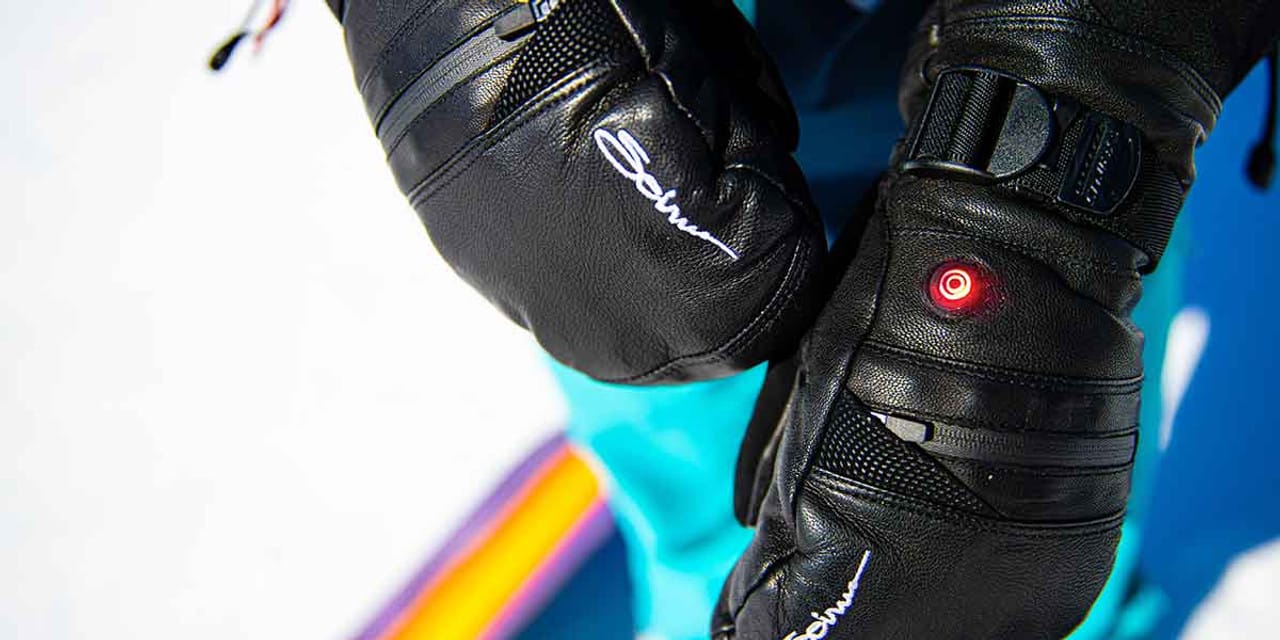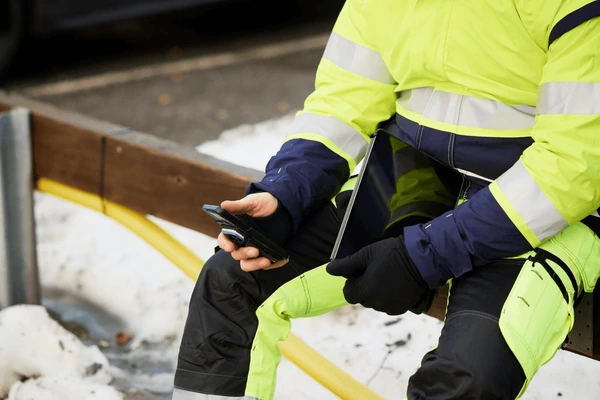
Workwear is no longer just protective clothing. In today’s global industries, it has become a logistical asset. With millions of workers across construction, mining, oil & gas, healthcare, logistics, and manufacturing, companies face a recurring challenge:
- How do you track thousands of uniforms moving between workers, laundries, and warehouses?
- How do you ensure certified PPE is actually being worn in compliance-heavy industries?
- How do distributors and contractors prevent loss, theft, or counterfeits when handling large-scale supply contracts?
This is where smart logistics comes in. By embedding technologies like RFID chips, QR codes, NFC tags, or GPS trackers into workwear, companies transform uniforms from consumables into traceable, manageable assets. The result is better compliance, longer product life cycles, and—most importantly—real cost savings.
Google Snippet: Quick Answer
Trackable workwear using RFID, QR, and NFC enables real-time inventory management, reduces losses, and ensures compliance in industries like construction, healthcare, and oil & gas. Companies save 20–40% in logistics and replacement costs by adopting smart tracking solutions.
Why Tracking Workwear Logistics Matters
Workwear distribution in emerging markets—Africa, Middle East, South America, and Central Asia—faces unique problems:
-
High worker turnover
Contractors often deal with seasonal or project-based labor. Workwear is issued, lost, or never returned. Without tracking, annual replacement costs soar. -
Laundry & hygiene cycles
In industries like healthcare and food processing, uniforms require frequent laundering. Without a digital system, garments get mixed up, damaged, or misplaced. -
Counterfeit & compliance risks
Some projects, especially in oil & gas or mining, require certified flame-resistant (FR) or EN/ANSI-standard gear. Fake or non-compliant clothing entering the supply chain can result in audits, fines, or accidents. -
Inventory bottlenecks
A distributor handling 50,000 sets of uniforms for a railway project needs visibility: which depot has what, which garments need replacement, and which workers are overdue for new PPE. -
Cost leakage
Studies from European and Middle Eastern rental workwear providers show that 20–30% of uniforms are lost annually without digital tracking. For a mining contractor in Africa or Central Asia, this translates to hundreds of thousands of dollars wasted.
Technology Breakdown: RFID, QR, NFC, and GPS
Not all tracking solutions are created equal. Each technology has its strengths, costs, and best-fit industries.
1. RFID (Radio-Frequency Identification)
- How it works: Tiny chips embedded in workwear send signals when scanned by RFID readers.
- Pros:
- Automates bulk scanning (laundry bags, storage bins).
- Works without line of sight.
- Can track thousands of garments quickly.
- Cons:
- Higher upfront cost.
- Requires RFID infrastructure (scanners, antennas).
- Best for: Large-scale operations (oil & gas, mining, hospitals, industrial laundries).
2. QR Codes
- How it works: Printed or stitched QR labels are scanned via smartphones or handheld devices.
- Pros:
- Very low cost.
- Easy to implement.
- Anyone with a phone can scan.
- Cons:
- Requires line of sight.
- Labels can fade or get damaged.
- Manual scanning is slower than RFID.
- Best for: Small and mid-sized distributors, contractors with limited budgets.
Real-World Case Studies of Trackable Workwear
Case #1 – Mining Contractor in South Africa
A major gold mining company issued 20,000 flame-resistant coveralls annually. Within a year, nearly 25% went missing—workers kept them, resold them, or lost them. The company introduced RFID-tagged uniforms linked to worker IDs.
- Outcome: Lost uniforms dropped by 70%, saving $350,000 per year.
- Extra benefit: The RFID system also flagged when coveralls exceeded their recommended wash cycles, helping with compliance audits.
Case #2 – Oil & Gas Project in Saudi Arabia
A subcontractor managing a refinery expansion faced audit failures because workers showed up in non-compliant gear. Some even used counterfeit branded uniforms. The distributor responded by introducing QR-coded labels on every garment, linking directly to certificates of conformity.
- Outcome: Inspectors could instantly scan a QR code to verify compliance.
- Result: Zero audit failures in two years, and the contractor secured repeat contracts with the refinery operator.
Case #3 – Logistics Hub in Brazil
At a large e-commerce warehouse near São Paulo, over 5,000 workers cycle through uniforms daily. Initially, garments were sorted manually, often leading to mix-ups and shortages. With RFID-enabled laundry bags, entire loads could be scanned in seconds.
- Outcome: Turnaround time for clean uniforms dropped from 48 hours to 24.
- Cost savings: Annual laundry losses reduced by 40%, freeing up budget for new PPE.
Case #4 – Construction Project in Kazakhstan
A distributor supplied reflective vests and jackets to a road construction project spanning hundreds of kilometers. The challenge: gear was constantly moving between remote depots. GPS wasn’t practical, but QR-based tracking combined with mobile apps allowed supervisors to log uniform distribution and return at every site.
- Outcome: Clear visibility of which depot had surplus gear and which needed resupply.
- Improvement: Reduced emergency re-orders by 60%, cutting procurement delays.
Application Scenarios
Smart logistics in workwear isn’t limited to one industry. Let’s look at where it delivers the most value:
-
Industrial Laundries
- RFID allows automatic scanning of garments in bulk, ensuring nothing is lost in washing cycles.
- Prevents costly disputes between laundries and contractors over “missing uniforms.”
-
Healthcare & Pharma
- QR codes link uniforms to hygiene records, ensuring compliance with strict infection-control protocols.
- In pharma, uniforms can be tracked to prevent cross-contamination between zones.
-
Oil & Gas / Mining
- RFID and NFC can store critical compliance data (FR rating, certification expiry).
- Supervisors quickly check if workers are using the right gear before entering high-risk zones.
-
Logistics & Warehousing
- With thousands of workers changing shifts daily, digital systems prevent bottlenecks.
- Workers receive the correct size and gear faster, keeping operations running smoothly.
-
Construction Projects
- For projects with multiple contractors, digital workwear tracking reduces disputes over inventory responsibility.
- QR scanning apps enable transparency when different subcontractors share gear pools.
Procurement Mistakes to Avoid
Even when buyers understand the potential of RFID and QR solutions, they often fall into the same traps:
-
Choosing the wrong technology for scale
- Many small distributors try to use RFID without investing in readers and antennas. The result? A costly system with no real benefit.
- Solution: Match technology to scale. Use QR for small projects, RFID for large fleets.
-
Overlooking durability of labels
- QR codes fade under harsh laundry chemicals; RFID chips fail when poorly embedded.
- Solution: Ask suppliers for laundry-tested samples before committing to bulk orders.
-
Not linking logistics with compliance
- Some projects track inventory but ignore certification tracking. When audits come, there’s no proof of compliance.
- Solution: Ensure the system can store or link to certificates, wash cycles, and PPE expiry dates.
-
Ignoring worker adoption
- Fancy tracking systems fail if workers find them complicated.
- Solution: Train supervisors, keep scanning processes simple, and use mobile-friendly tools.
Cost-Benefit & ROI Analysis
Digital tracking of workwear looks expensive upfront—but the numbers tell a different story.
| Scenario | Without Smart Logistics | With RFID/QR Tracking | Annual Savings |
|---|---|---|---|
| Lost uniforms (20,000 pcs) | $200,000 | $60,000 | $140,000 |
| Audit failure (compliance penalties) | $75,000 | $0 | $75,000 |
| Laundry losses | $50,000 | $20,000 | $30,000 |
| Total | $325,000 | $80,000 | $245,000 |
✅ ROI Example: A mining contractor investing $40,000 in RFID achieved savings of nearly $245,000 in the first year alone.
Regional Market Opportunities
Africa
- Drivers: Construction boom, mining growth, donor-funded infrastructure.
- Opportunity: Affordable QR-based systems that prove compliance for international projects.
- Key markets: Nigeria, Kenya, South Africa.
Middle East
- Drivers: Oil & gas mega-projects, strict compliance audits, high penalties.
- Opportunity: RFID/NFC integrated with PPE certifications.
- Key markets: Saudi Arabia, UAE, Qatar.
South America
- Drivers: Logistics and warehousing growth from e-commerce.
- Opportunity: Warehouse-scale RFID for laundries and large workforce uniforms.
- Key markets: Brazil, Chile, Colombia.
Central Asia
- Drivers: Energy projects (pipelines, oil refineries, mining).
- Opportunity: QR tracking for remote projects with multiple depots.
- Key markets: Kazakhstan, Uzbekistan.
Buyer Toolkit
Quick Checklist
- [ ] Decide on scale: QR for small, RFID for large.
- [ ] Verify laundry and durability tests.
- [ ] Ensure system links to compliance data.
- [ ] Train supervisors in simple scanning processes.
- [ ] Pilot test before scaling.
Buyer FAQ
Q1: Is RFID too expensive for small distributors?
A: Yes. Unless you’re managing 5,000+ uniforms, start with QR labels.
Q2: Can workers misuse or swap uniforms?
A: With RFID/QR linked to worker IDs, every item can be tracked to its assigned user.
Q3: What if my country lacks RFID infrastructure?
A: Begin with QR codes—any smartphone can scan them. Later, upgrade when your operation scales.
Conclusion
Smart logistics isn’t science fiction—it’s happening today. By using RFID, QR, and other tracking tools, distributors and contractors gain control, compliance, and cost savings.
In emerging markets, where every lost uniform eats into profits and every failed audit threatens contracts, the right logistics system is not optional—it’s survival.
📩 Want to explore trackable workwear solutions?
Email: [email protected]
🌐 www.workwearsolutions.net
Zion Zhang
Recent Posts
 Lightweight Armor & Impact-Resistant Workwear for High-Risk Jobs2025年9月26日From underground mines in Kazakhstan to oil rigs off the […]
Lightweight Armor & Impact-Resistant Workwear for High-Risk Jobs2025年9月26日From underground mines in Kazakhstan to oil rigs off the […] Antimicrobial & Self-Cleaning Fabrics: Hygiene in Food, Pharma & Healthcare2025年9月20日In industries where hygiene is non-negotiable—food […]
Antimicrobial & Self-Cleaning Fabrics: Hygiene in Food, Pharma & Healthcare2025年9月20日In industries where hygiene is non-negotiable—food […] Sustainable & Circular Workwear: Meeting ESG Demands in 20252025年9月20日Workwear has always been about safety and functionality, […]
Sustainable & Circular Workwear: Meeting ESG Demands in 20252025年9月20日Workwear has always been about safety and functionality, […] Cooling Fabrics for Hot Climates: Innovations for Africa & Middle East2025年9月20日Step into a construction site in Dubai at noon or a highway […]
Cooling Fabrics for Hot Climates: Innovations for Africa & Middle East2025年9月20日Step into a construction site in Dubai at noon or a highway […] Smart Workwear: How IoT and Sensors are Changing Safety Gear2025年9月20日Walk onto a modern construction site, an oil rig, or even a […]
Smart Workwear: How IoT and Sensors are Changing Safety Gear2025年9月20日Walk onto a modern construction site, an oil rig, or even a […] Workwear for Central Asian Mining & Energy Projects2025年9月18日From the coal mines of Kazakhstan to the oil fields of […]
Workwear for Central Asian Mining & Energy Projects2025年9月18日From the coal mines of Kazakhstan to the oil fields of […]
CONTACT US
- Feel free to contact us any time. We will get back to you as soon as we can!
- +86-17330061805
